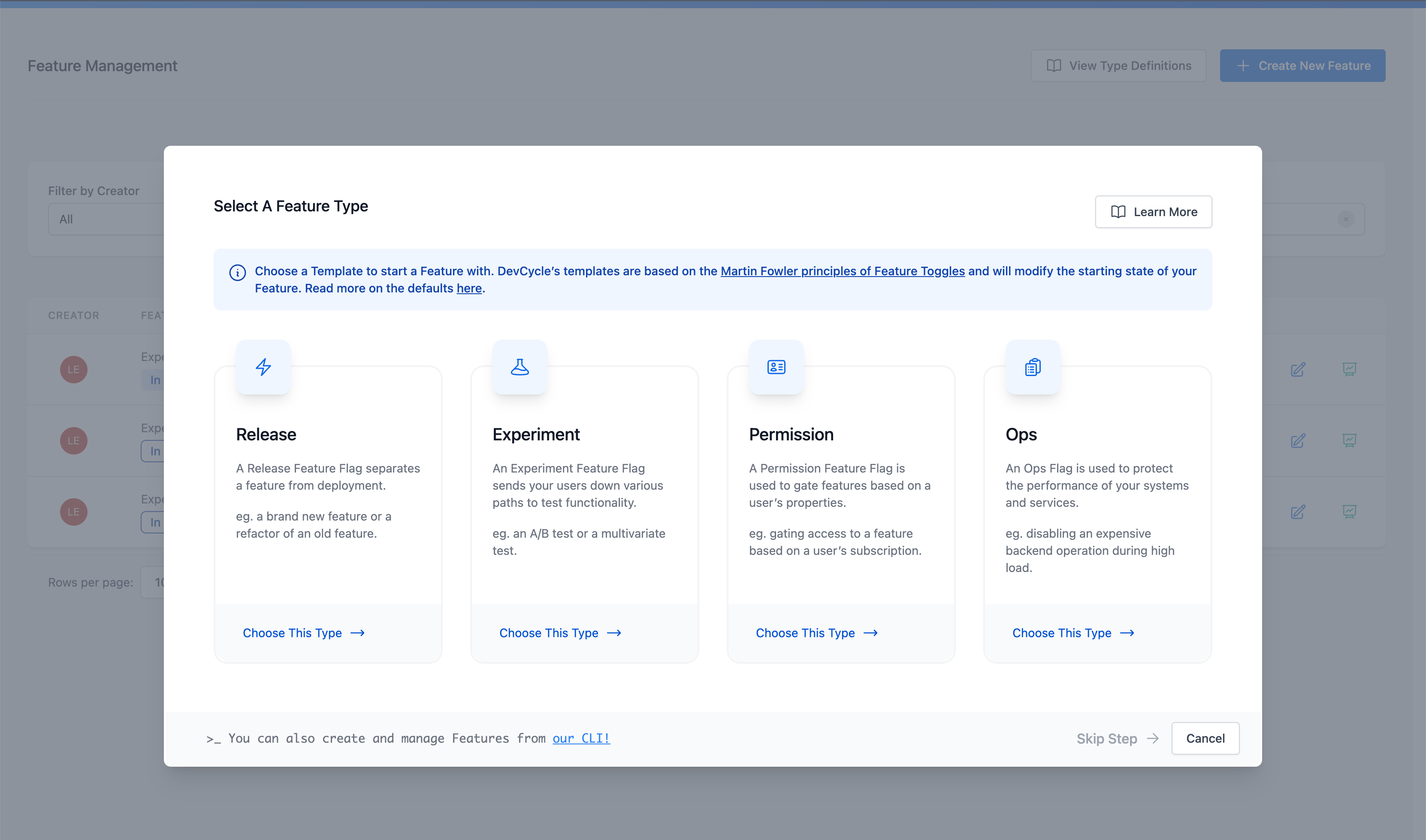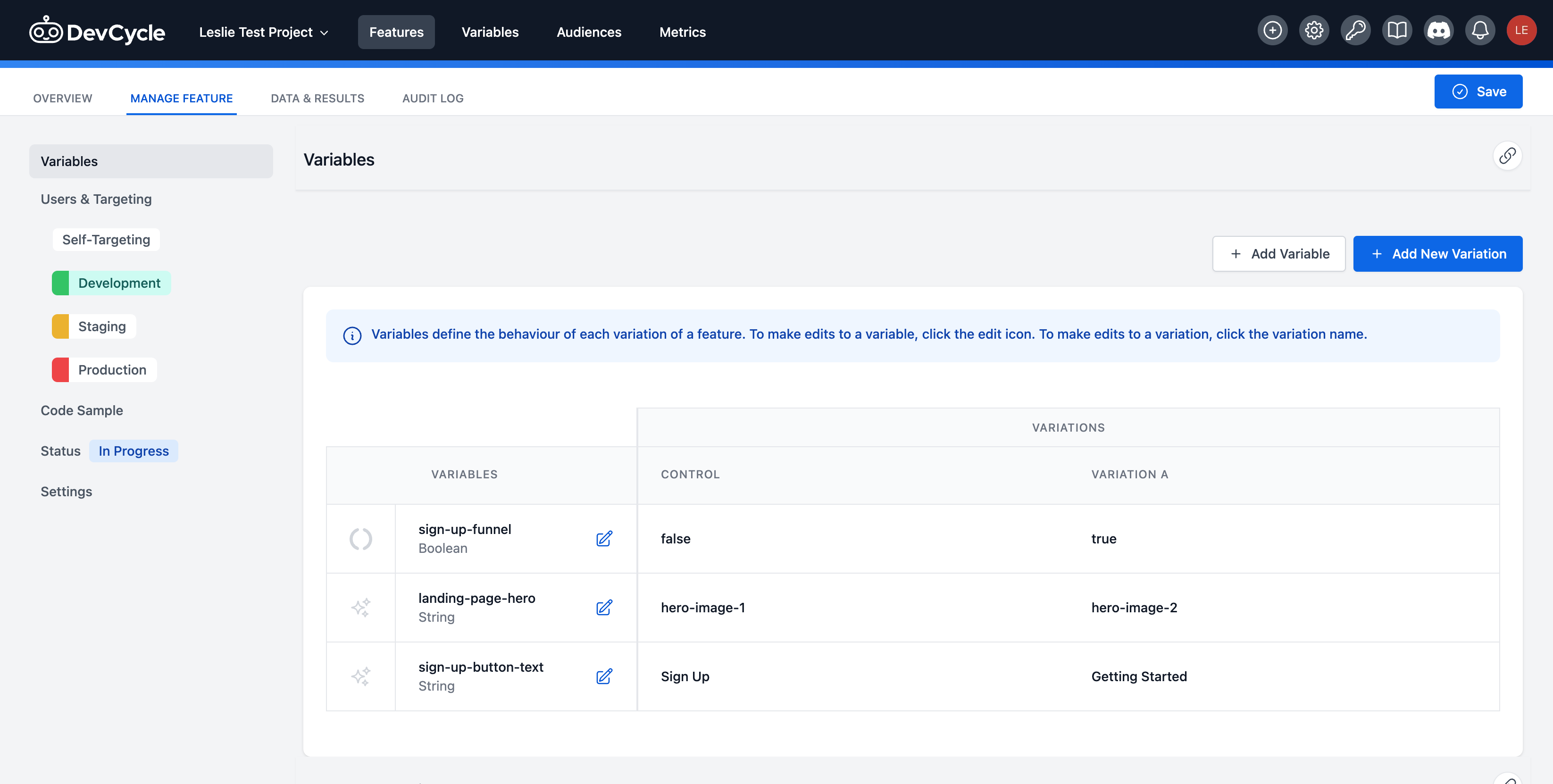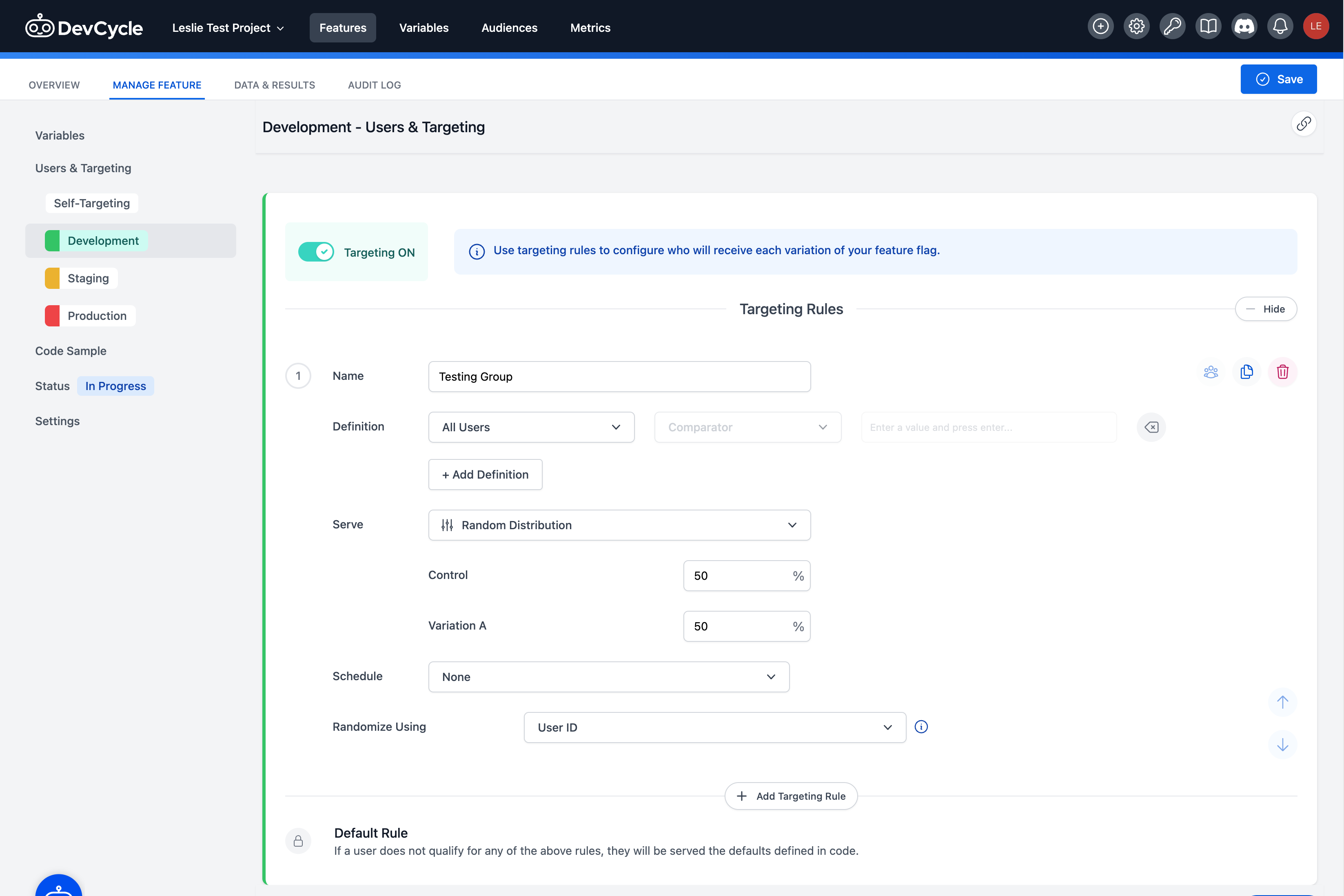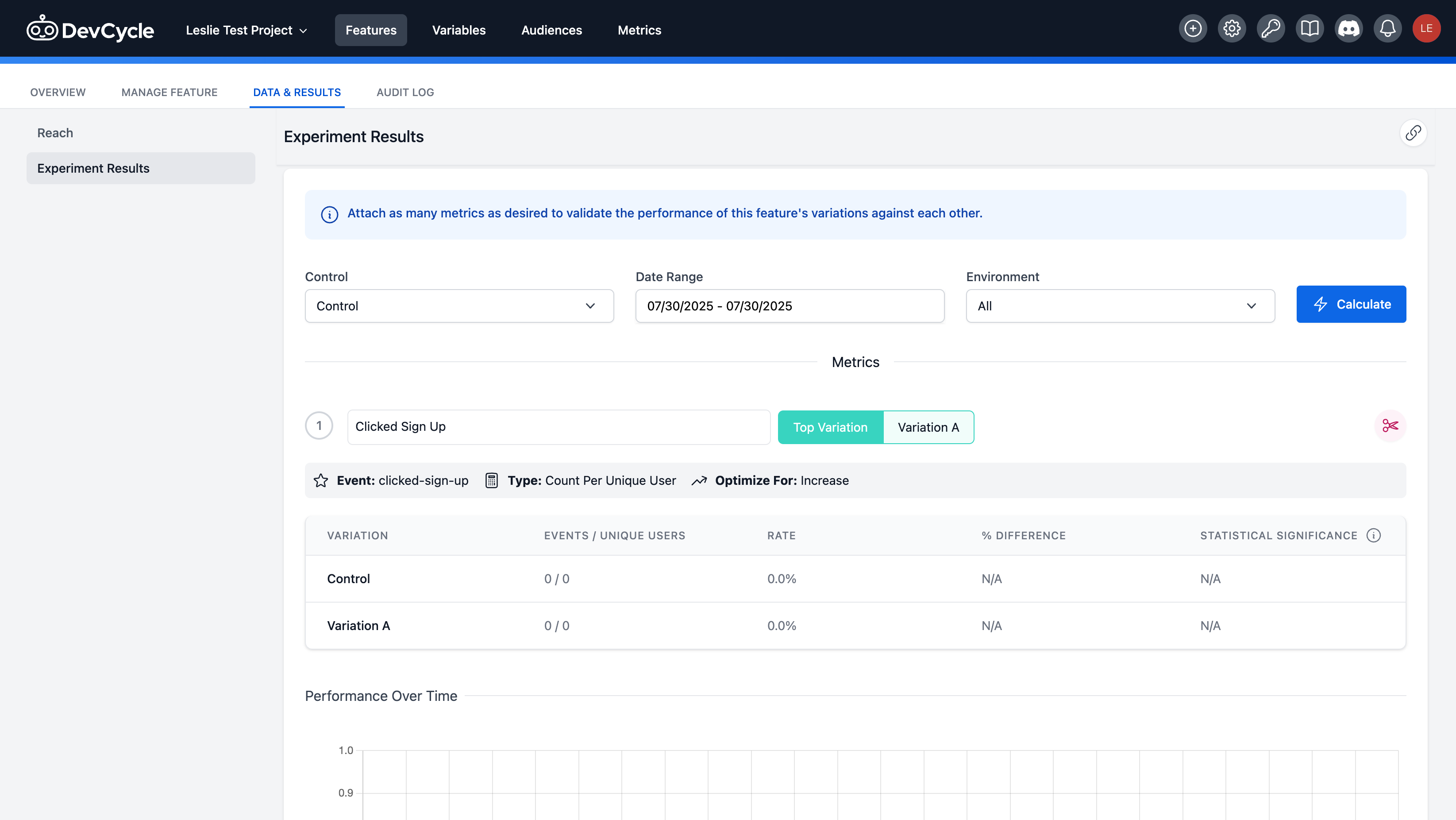Tutorial: Funnel Experiment
Funnel Experiment
Funnel experiments are a testing method that involves optimizing how users move through a series of steps toward a specific goal. Typical examples of funnels include onboarding flows or a storefront's product-page-to-checkout flow. In a funnel experiment, we want to A/B test one or multiple steps of the funnel, tracking conversions at each step.
Example Sign-Up Funnel
In our example, we'll use the following sign-up flow:
- Visit landing page
- Click on "Sign Up"
- Create an account
- Complete onboarding
Creating a Feature Experiment
On DevCycle, create a new Feature using the Experiment Template.

Adding Variables and Variations
Define a set of Variables and Variations that will control your A/B test. Create a Variable for each step of the sign-up flow that you want to modify and A/B test. For example, you may want to try replacing the hero page on your landing page or changing the "Sign Up" button to a "Getting Started" button to see if it leads to better conversions.

Setting up the Targeting Rule
Set the Targeting Rules for your Feature. If you'd like to test the funnel with a specific subset of users, you may want to set up and target Custom Properties. Otherwise, you can leave this at All Users and move on to your distribution. Typically, we'll define the distribution to be a 50/50 split between Variations so that we're able to obtain meaningful results and reach statistical significance.

Creating and Adding Metrics
Lastly, you may want to add metrics to your Feature in order to track conversions from each step. To do so, head over to the Data & Results tab and, from the Experiment Results section, create a new Metric for each step.

That's it! You've completed the setup of your Feature Experiment from the DevCycle dashboard. Once you implement the new Variables and Code Events in code, you're all set.